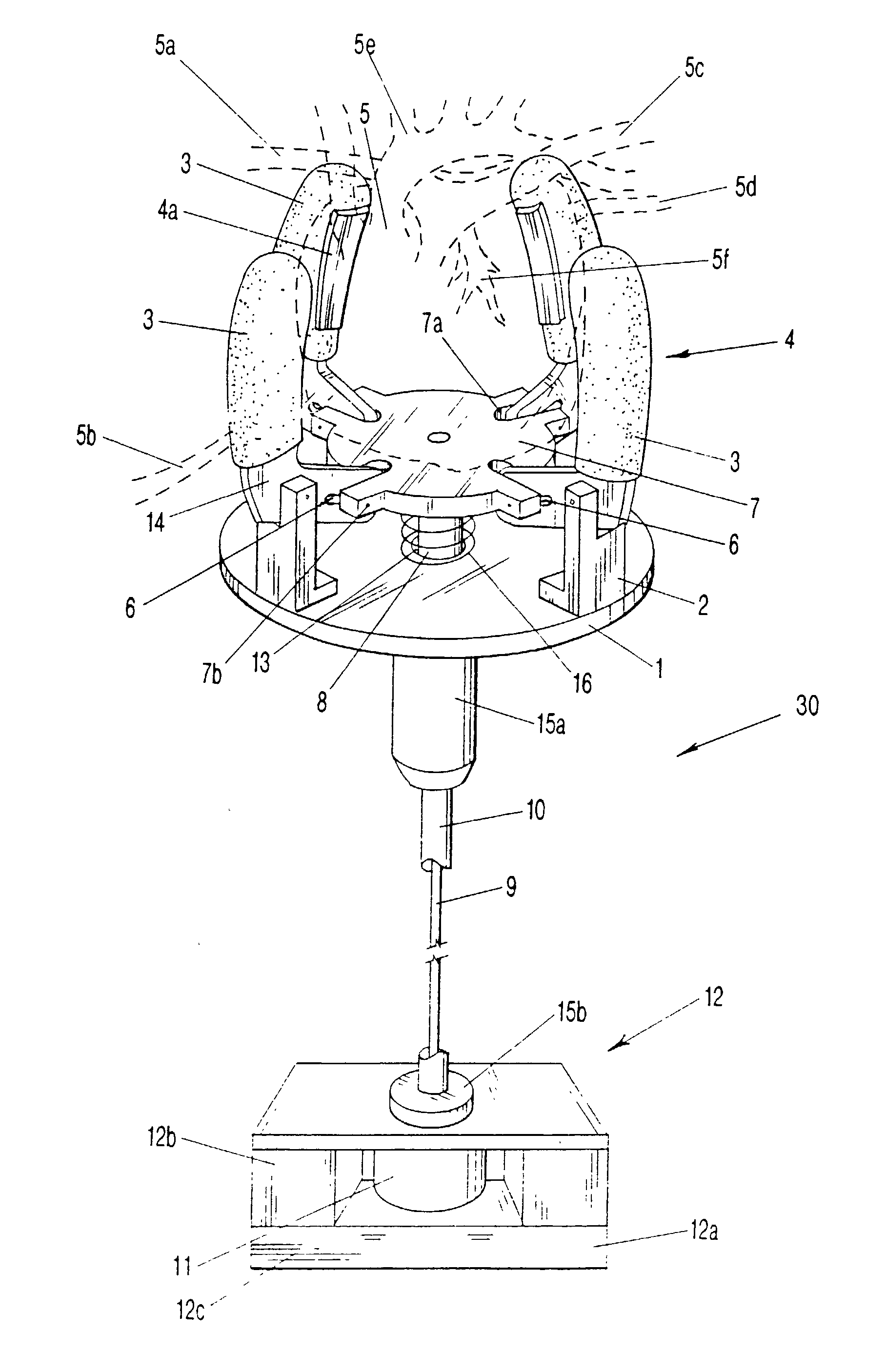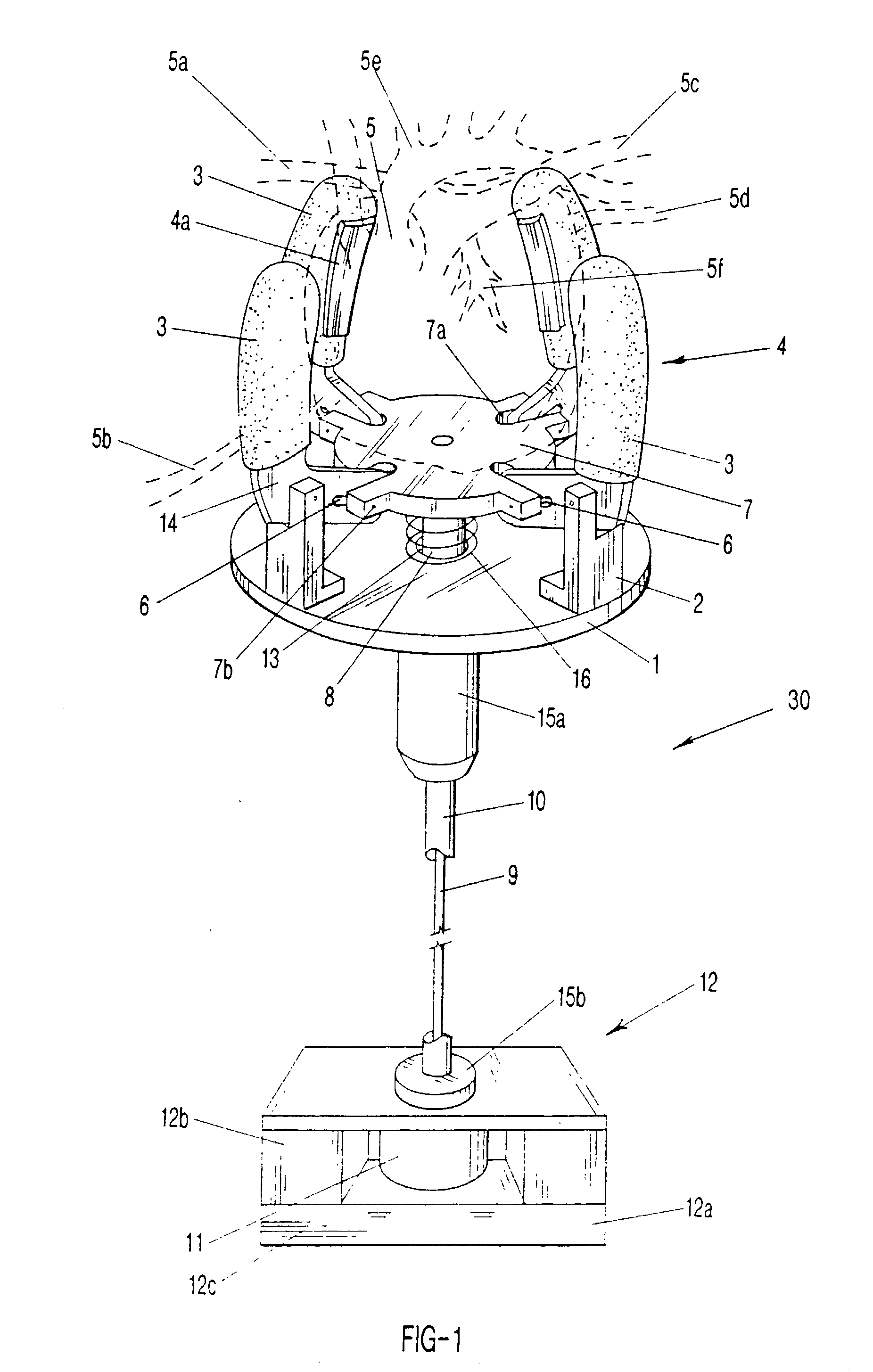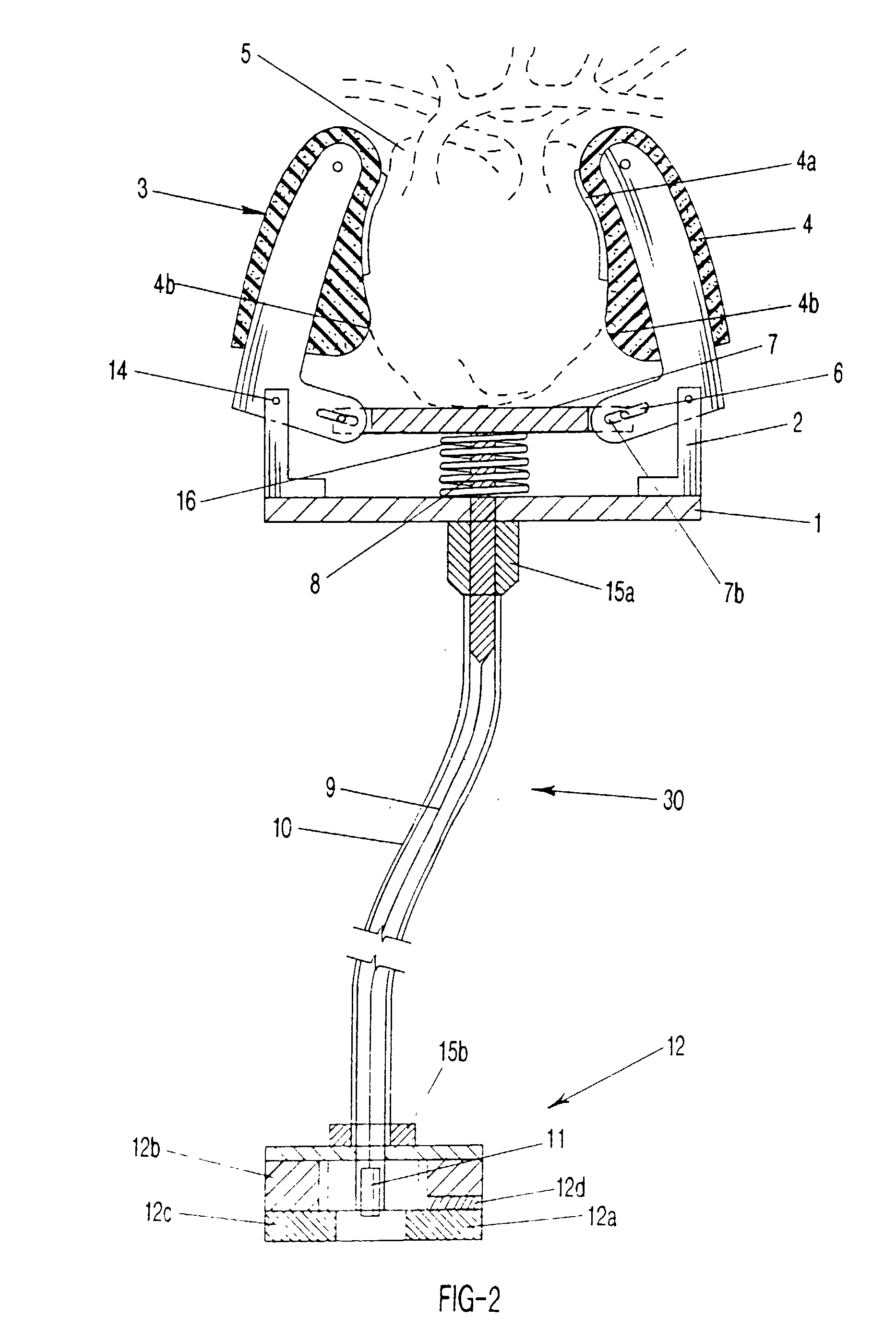Electrically-controllable multi-fingered resilient heart compression devices
- Summary
- Abstract
- Description
- Claims
- Application Information
AI Technical Summary
Benefits of technology
Problems solved by technology
Method used
Image
Examples
Embodiment Construction
)
[0037] FIG. 1 shows the preferred embodiment of the present invention. Heart 5, (cardiac muscle) is being compressed by a plurality of soft compression fingers 3, each finger 3 containing a soft outer cover 4. FIG. 1 shows the associated major arteries and veins such as the superior vena cava 5(a), the inferior vena cava 5(b), the pulmonary artery 5(c), the pulmonary vein 5(d) and the aorta 5(e) as well as the coronary arteries 5(f). The multi-fingered soft and resilient robotic heart-compression devices equipped with a flexible stem 10 include soft compression fingers 3 equipped with a soft outer cover 4 that surround heart 5. The soft outer cover 4 is preferably made from soft spongy silicon rubber and can also be in the form of polymer gels or water-filled bladders. Each finger 3 is preferably equipped with pressure monitoring electrodes 4(a) for monitoring the compression of the cardiac muscle 5 to simulate normal pumping action of the myocardium muscle. The preferred apparatus...
PUM
 Login to View More
Login to View More Abstract
Description
Claims
Application Information
 Login to View More
Login to View More - R&D
- Intellectual Property
- Life Sciences
- Materials
- Tech Scout
- Unparalleled Data Quality
- Higher Quality Content
- 60% Fewer Hallucinations
Browse by: Latest US Patents, China's latest patents, Technical Efficacy Thesaurus, Application Domain, Technology Topic, Popular Technical Reports.
© 2025 PatSnap. All rights reserved.Legal|Privacy policy|Modern Slavery Act Transparency Statement|Sitemap|About US| Contact US: help@patsnap.com



